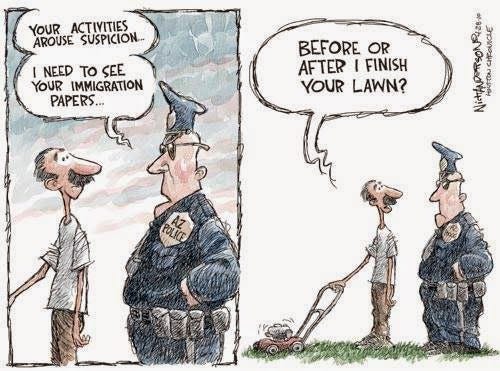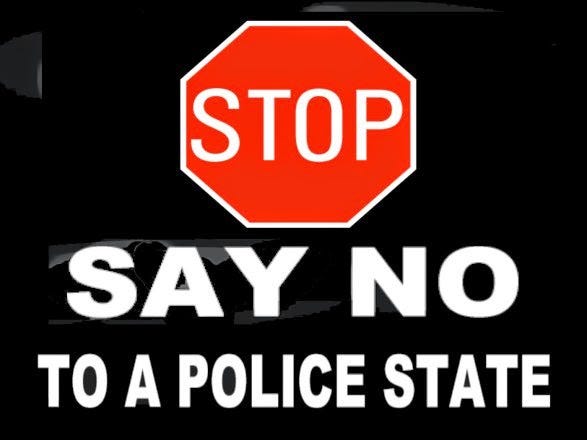DHS considers gamers & photographers a suspicious activity

The current case, known as Gill et al. v. Department of Justice et al (Gill v. DOJ), seeks to halt the standards that define the entire Suspicious Activity Reporting (SAR) program. If Gill is successful, it could effectively stop it.
The case involves five Americans—“two photographers, one white man who is a devout Muslim, and two men of Middle Eastern and South Asian descent”—according to the original July 2014 complaint. Among others, lawyers from the American Civil Liberties Union brought the case.
Lead plaintiff Wiley Gill is a white man who converted to Islam as a student at California State University, Chico, and he drew the attention of the Chico Police Department in May 2012. (Chico is about 180 miles due north of San Francisco.) According to the SAR about Gill, the officer entered Gill’s residence in response to an apparent domestic violence incident (Gill was home alone). The officer then saw on a webpage “titled something similar to ‘Games that fly under the radar’" on Gill’s computer.
"Coupled with the fact he is unemployed, appears to shun law enforcement contact, has potential access to flight simulators via the Internet which he tried to minimize is worthy of note," the SAR, entitled "Suspicious Male Subject in Possession of Flight Simulator Game," concludes.
In October 2014, the govt responded to the suit with a motion to dismiss, arguing among other things that the plaintiffs lacked standing. The feds believed that none of the plaintiffs can prove a “legally cognizable injury.”
Playing games and using the internet are inherently suspicious because of this tenuous thread:
The 9/11 terrorists used flight simulators to train for their attacks. (The SAR guidelines warn that "acquisition of expertise" related to "aviation activity" is suspicious enough to be awarded a capital "S.") Had the Chico Police Dept. bothered to toss a little respect the Fourth Amendment's way, Gill would likely be nothing more than just some guy looking for a job rather than currently involved in a federal civil rights lawsuit over government surveillance.
This tiny bit of unrelated "data" was gathered by the Chico PD, which entered Gill's residence without a warrant or his consent. According to the lawsuit filed by the ACLU, the "domestic violence call" that predicated the search of Gill's residence was likely bogus and only used as justification to search a residence the CPD planned to search anyway. For the better part of two years, Gill had several previous "interactions" with Chico police officers, almost all of them based solely on his appearance ("full beard and traditional garb," "pious demeanor") and religious activities.
Judge Richard Seeborg didn't buy the govt’s argument:
The allegations of the complaint, however, show that the gravamen of the alleged injuries lie not in actions of “front line” authorities standing alone, but in the fact that those authorities, pursuant to the guidance and training provided by defendants, submit SAR reports under criteria and circumstances that are allegedly inconsistent with legal principles and policies embodied in other law. Plaintiffs’ cognizable challenge is not to the conduct of law enforcement or private security officers during the alleged encounters per se, although there is at least some implication that plaintiffs believe Defendants’ Standards lead front line personnel to overreach even at the point of making initial observations. Plaintiffs are claiming injury from what occurs after the encounters, pursuant to the Standards.
Gill did nothing more than "look Muslim" and play videogames. Other plaintiffs did little more than commit photography.
Internationally-renowned photographer (and former Sara Lee/Levi's executive), James Prigoff, became the subject of an SAR for trying to take photographs of something that has been previously photographed hundreds of times without incident:
The "Rainbow Swash" painting that adorns a Boston oil refinery's storage tank. Prigoff was approached by the company's security guards and told he couldn't photograph the oft-photographed storage tank. Despite leaving and providing no contact information, Prigoff was visited by a member of the FBI's Joint Terrorism Task Force shortly after returning to his home in Sacramento.
Plaintiff Aaron Conklin, a graphic design student, was approached by sheriff's deputies while photographing a refinery. He was told he would be put on a "NSA watchlist."
DHS wants to continue violating Americans rights while producing no results. The government moved to dismiss this lawsuit, claiming none of the plaintiffs can prove a "legally cognizable injury" and attempted to put the blame back on the shoulders of local law enforcement agencies. This didn't sit well with Judge Richard Seeborg.
Defendants primarily frame their challenge to plaintiffs’ standing as a purported failure to allege facts showing causation and redressability. Defendants’ argument characterizes plaintiffs’ supposed injuries as arising, if at all, primarily from the actions of the “front line” state and local law enforcement authorities. Defendants contend plaintiffs have not alleged, and credibly cannot, that the scrutiny they purportedly received from state and local police, or even from private security personnel, was the result of the challenged protocols or other conduct of defendants.
The allegations of the complaint, however, show that the gravamen of the alleged injuries lie not in actions of “front line” authorities standing alone, but in the fact that those authorities, pursuant to the guidance and training provided by defendants, submit SAR reports under criteria and circumstances that are allegedly inconsistent with legal principles and policies embodied in other law. Plaintiffs’ cognizable challenge is not to the conduct of law enforcement or private security officers during the alleged encounters per se, although there is at least some implication that plaintiffs believe Defendants’ Standards lead front line personnel to overreach even at the point of making initial observations. Plaintiffs are claiming injury from what occurs AFTER the encounters, pursuant to the Standards. As such, defendants’ contentions as to causality and redressability both fail.
The harms plaintiffs seek to remedy arise directly from the existence of Defendants’ Standards. If plaintiffs can show those standards violate the APA, they will be declared invalid.
While invoking causality and redressability as the main purported shortcomings of plaintiffs’ standing, defendants also imply that merely being the subject of an SAR, in the national database, should not be deemed a cognizable injury. In light of the privacy and reputational interests involved, however, this argument is not tenable.
http://arstechnica.com/tech-policy/2015/02/suspicious-male-in-possession-of-flight-simulator-game-lawsuit-moves-ahead/
https://www.techdirt.com/articles/20150225/09584130140/lawsuit-over-dhs-first-amendment-violating-suspicious-activity-reports-given-green-light-judge.shtml
DHS/FBI's latest B.S. warning: Protestors/activists might attack emergency vehicles
The Virginia Fusion Center (VFC) has observed via open sources that actors affiliated with the Anonymous hacktivist movement released a video which purportedly identifies a Chicago Office of Emergency Management and Communications (OEMC) vehicle as a tool for law enforcement wiretapping efforts by police and fusion center personnel in Chicago, Illinois. In other words the public identified police using "Stingray" cellphone surveillance.
Click here & here to read more.
The VFC is sharing this information for situational awareness, as emergency management vehicles operating near protest areas may be targeted by precipitating violent or malicious activity.
How is identifying govt vehicles that are illegally spying on Americans a pre-cursor to violence? It's beyond reason and B.S.! This is the American Police State we live in, if you expose govt. wrongdoing you're considered a threat!
Need more proof of the American Police State lunacy? The DHS/FBI even considers staying at hotels to be suspicious.



